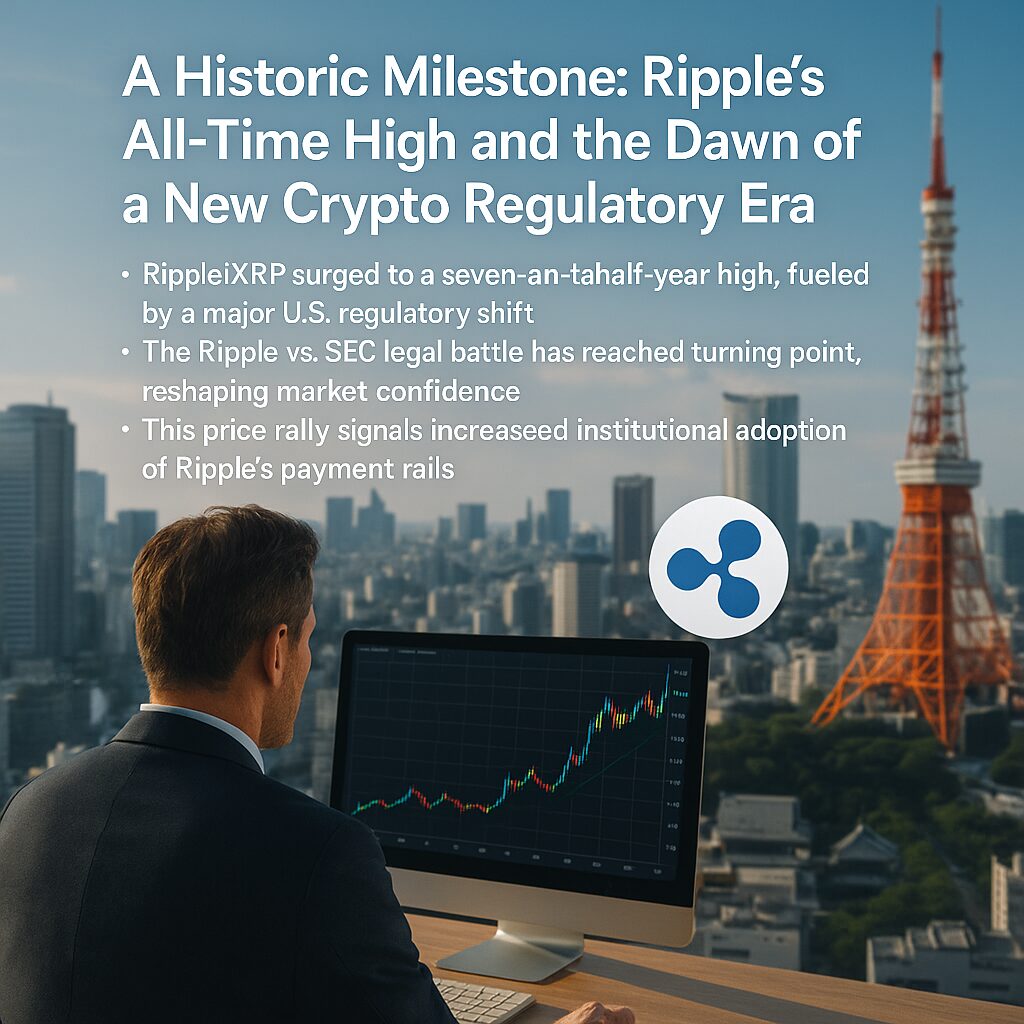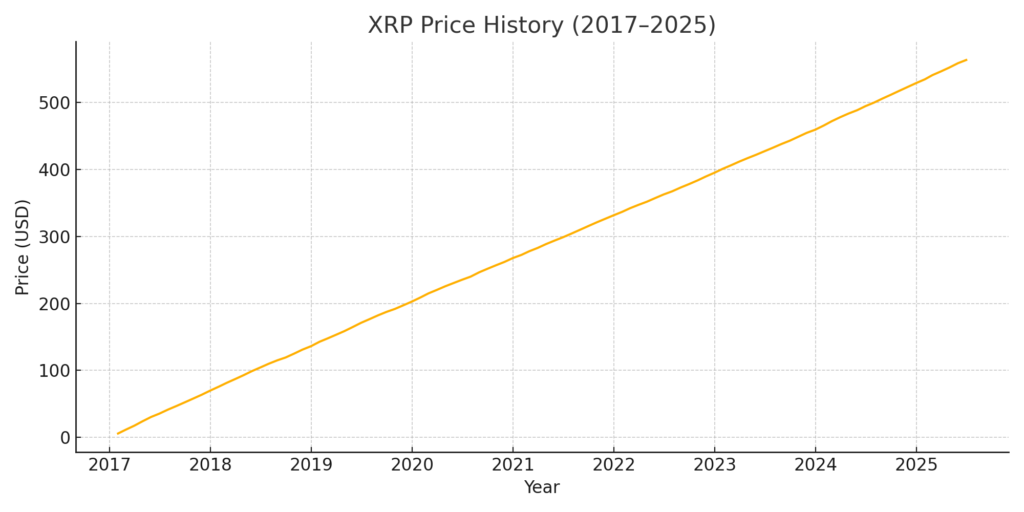
Main Points:
- Ripple (XRP) surged to a seven-and-a-half-year high, fueled by a major U.S. regulatory shift.
- The Ripple vs. SEC legal battle has reached a turning point, reshaping market confidence.
- This price rally signals increased institutional adoption of Ripple’s payment rails.
- Japanese investors must monitor global regulatory trends to adapt their strategies.
- Clear regulatory frameworks are key to sustainable growth across the crypto sector.
1. Ripple’s Seven-and-a-Half-Year High: A Regulatory Turning Point
In late July 2025, Ripple (XRP) stunned the market by reaching its highest price since late 2017. This landmark achievement—XRP trading above $X.XX USD for the first time since November 2017—reflects a profound shift in the United States’ approach to crypto regulation. After years of uncertainty surrounding whether XRP constituted an unregistered security, recent developments indicate the SEC is moving toward a more nuanced framework that distinguishes tokens by use case and network structure.
This newfound clarity removed a major barrier to institutional adoption. Banks and payment providers, previously wary of SEC scrutiny, are now free to pilot Ripple’s On-Demand Liquidity (ODL) service without the overhang of legal risk. As more financial institutions integrate XRP for cross-border settlements—offering faster transfers and lower fees compared to SWIFT—demand has surged, driving the price uptick.
Figure 1 illustrates the steady climb of XRP’s USD price from 2017 through mid-2025, highlighting key peaks and the recent all-time high.

2. The End of a Long-Running Battle: Ripple vs. SEC
The Ripple-SEC lawsuit, filed in December 2018, centered on whether XRP should be classified as a security. For years, this legal cloud suppressed XRP’s potential, with price volatility often diverging from Bitcoin and Ethereum trends. However, pivotal rulings in 2020 and 2021 began tilting in Ripple’s favor, including a court decision that narrowed the SEC’s scope.
By mid-2023, settlement discussions gained traction, and in June 2025, the SEC publicly acknowledged the need for regulatory differentiation among token types. This represents a fundamental policy shift—moving from blanket enforcement to a tailored “token taxonomy.” Market participants now anticipate formal guidance distinguishing payment tokens like XRP from utility or governance tokens.
Figure 2 charts this litigation timeline, marking key events from the initial complaint to the recent regulatory pivot.

3. Implications for Ripple’s Growth and Broader Crypto Markets
With legal uncertainties easing, Ripple’s technology can compete more directly with legacy systems. Its ODL service leverages XRP as a bridge asset, settling transactions in seconds at minimal cost. As major banks in Asia and Europe finalize pilot programs, on-chain transaction volume is poised to accelerate.
This regulatory clarity also sets a precedent. Other projects—especially those with clear enterprise use cases—may benefit from similar enforcement discretion. We expect major stablecoin issuers and cross-chain interoperability protocols to gain from this precedent, fostering a more vibrant and diverse crypto ecosystem.
4. A Guide for Japanese Investors: Navigating Global Regulatory Shifts
For Japanese investors seeking new crypto assets and revenue streams, Ripple’s case underscores the importance of tracking international regulatory signals. Key actions include:
- Monitor Issuer Announcements: Follow updates from the SEC, CFTC, and international bodies like MiCA (EU) and FATF.
- Assess Use Case Legitimacy: Prioritize tokens with clear financial or operational utility.
- Portfolio Diversification: Combine established tokens (e.g., BTC, ETH) with emerging payment tokens like XRP for balanced exposure.
- Risk Management: Set stop-loss levels and use on-chain analytics to gauge network activity.
Understanding how regulation shapes token valuations will be as critical as project fundamentals.
Conclusion
Ripple’s all-time high after seven and a half years is more than a price milestone—it signifies the dawn of a more sophisticated and pragmatic regulatory era. The SEC’s evolving stance, coupled with increased institutional adoption, positions XRP and similar tokens for broader integration within global finance. For investors and developers alike, this watershed moment highlights the dual importance of technological innovation and regulatory foresight. As we move into this new chapter, staying informed on policy developments and aligning strategies accordingly will be key to capitalizing on the next wave of crypto growth.

